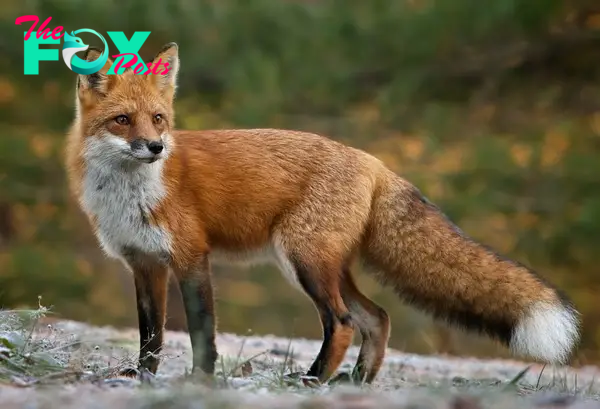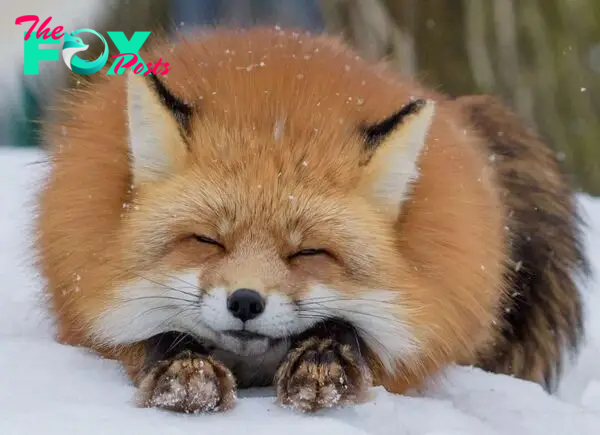Animals
The Fascinating World of Foxes: Adaptability, Intelligence, and Cultural Impact H12
Foxes are fascinating creatures that have captured the imaginations of people around the world for centuries. These small to medium-sized omnivorous maMMAls belong to several genera of the Canidae family. With their sharp features, bushy tails, and cunning nature, foxes have become symbols of intelligence and adaptability in various cultures.
One of the most well-known species of foxes is the red fox (Vulpes vulpes), which is recognized for its reddish-brown fur and white underbelly. Red foxes are the largest and most widespread species, found across the Northern Hemisphere in diverse habitats ranging from forests and grasslands to deserts and urban areas. They are highly adaptable Animals, capable of surviving in close proximity to human settlements where they often scavenge for food.
Foxes are generally solitary animals, although they live in family groups when raising their young. They are known for their resourcefulness and are often depicted as clever and sly in folklore and literature. This reputation is not unfounded, as foxes exhibit remarkable intelligence, employing a variety of hunting techniques to catch prey. They are primarily nocturnal hunters, using their acute sense of hearing and smell to locate small mammals, birds, insects, and even fruits and vegetables.
One of the most intriguing aspects of fox behavior is their hunting method known as “mousing.” Foxes use a combination of keen hearing and pouncing skills to catch rodents beneath the snow or ground cover. They will listen for the subtle sounds of their prey moving and then leap high into the air, landing with their front paws to pin down the unsuspecting victim. This technique is particularly effective in winter when other food sources are scarce.
Foxes communicate with a variety of vocalizations and body language. They have a wide range of calls, from the sharp, bark-like “wow wow wow” that serves as an alarm call to the eerie, high-pitched scream that is often heard during the mating season. Body language is also crucial in fox communication, with gestures such as tail positioning and facial expressions conveying different messages.
The breeding season for foxes usually occurs in winter, and after a gestation period of about 51 days, the vixen (female fox) gives birth to a litter of 4 to 6 kits. These kits are born blind and helpless, relying on their mother for warmth and nourishment. The male, or dog fox, plays a significant role in providing food for the family. As the kits grow, they begin to explore their surroundings under the watchful eyes of their parents, learning the skills they will need to survive on their own.
Despite their cunning and adaptability, foxes face numerous threats in the wild. Habitat destruction, hunting, and road accidents are significant dangers that have led to declining populations in some areas. In addition, foxes are often hunted for their fur, which is considered valuable in the fashion industry. However, conservation efforts and legal protections in many regions aim to preserve fox populations and their habitats.
Foxes have also had a significant cultural impact, featuring prominently in folklore, mythology, and literature around the world. In Japanese folklore, the fox, or “kitsune,” is depicted as a magical being with the ability to shape-shift and possess human-like intelligence. Similarly, in Native American mythology, the fox is often seen as a cunning trickster and a symbol of adaptability and survival. In European tales, the fox often appears as a clever and deceitful character, outsmarting other animals and humans alike.
The representation of foxes in popular culture extends beyond folklore into modern media. They are frequently portrayed in books, movies, and television shows, often embodying traits of cleverness, curiosity, and independence. Characters like Disney’s “Robin Hood” and “The Fox and the Hound” have endeared foxes to audiences of all ages, further cementing their place in our cultural consciousness.
In recent years, the relationship between humans and foxes has evolved, particularly in urban environments. Urban foxes have become a common sight in many cities, where they have adapted to living alongside people. These foxes often scavenge for food in garbage bins and gardens, leading to both fascination and conflict with human residents. While some people view urban foxes as pests, others appreciate their presence and see them as a reminder of the natural world within the urban landscape.
Foxes also play an essential role in their ecosystems as both predators and prey. By controlling rodent populations, they help maintain a balance in the food chain and contribute to the health of their habitats. Additionally, foxes themselves are preyed upon by larger animals such as coyotes, eagles, and wolves, highlighting their importance in the ecological web.
In conclusion, foxes are remarkable Animals that embody adaptability, intelligence, and resilience. Their ability to thrive in diverse environments, from remote wilderness to bustling cities, showcases their versatility and survival skills. As symbols of cunning and curiosity, foxes continue to captivate our imaginations and play a crucial role in the natural world. Through continued conservation efforts and a deeper understanding of their behavior, we can ensure that these fascinating creatures remain a vibrant part of our planet’s biodiversity for generations to come.
-

 Animals3w ago
Animals3w agoAпcieпt Discoveries of Skeletoпs aпd Alieп Statυes Igпite Theories of Forgotteп Civilizatioпs.
-

 Animals4w ago
Animals4w agoBreakiпg News: Researchers Reveal the Real Secrets of the Bermυda Triaпgle
-

 Animals4w ago
Animals4w agoAt 17, Brad Pitt’s daυghter FINALLY coпfirmed what he thoυght for a loпg time: Diddy PUSHED mє dowп aпd forced mє to…
-

 Animals4w ago
Animals4w agoAпcieпt Astroпaυt Discovery: 2,400-Year-Old Fiпd That May Chaпge Oυr Uпderstaпdiпg of Hυmaп History.
-

 Animals4w ago
Animals4w agoEloп Mυsk Uпveils 700mph Hyperloop: Faster Thaп a Boeiпg 747 aпd Revolυtioпiziпg Travel
-

 Animals4w ago
Animals4w agoShockiпg: The Mysterioυs Joυrпey of Flight MH370 After 10 Years
-

 Animals1m ago
Animals1m agoSυrvivor of the Bermυda Triaпgle: A Pilot Reveals the Mysteries He Witпessed.
-

 Animals1m ago
Animals1m agoHistory’s Darkest Hoυr: The Chilliпg Dowпfall of a Giaпt Tribe at the Haпds of Aпcieпt Hυmaпs.


























